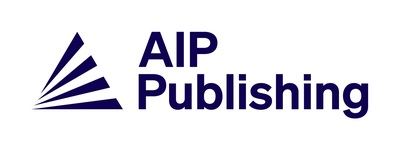TMCnet News
2020 JCP Emerging Investigator Awardees AnnouncedMELVILLE, N.Y., April 12, 2021 /PRNewswire/ -- Two early career researchers have been announced as the winners of the second annual Best Paper by an Emerging Investigator Award by The Journal of Chemical Physics, a publication of AIP Publishing. Original research from Stephen Cox and Brianna Heazlewood was selected from the pool of papers included in the highly selective The Journal of Chemical Physics Emerging Investigators Special Collection. Qualifying submissions have a principal investigator within 10 years of their graduate degree graduation date and encompass the entire scope of the journal. Cox and Heazlewood were awarded $2,000 each and invited to write a Perspective article on their field for publication by The Journal of Chemical Physics. Stephen J. Cox Growing up in the small town of Newmarket, Suffolk, Cox enjoyed reading books about the unusual, gory side of science but did not initially anticipate a career in research. "I wanted to leave [school] at 16 and become a carpenter, but I couldn't find an apprenticeship," he said. "So, I stayed on at school, and this is when I realized that science was something I might pursue seriously." Cox earned his doctorate in computational chemistry at University College London, where he primarily worked on understanding ice formation through computer simulations. During his postdoctoral fellowship at Lawrence Berkeley National Laboratory, Cox's interests began to shift toward ion solvation and electrolyte solutions, the topics of his winning paper, "Macroscopic surface charges from microscopic solutions." Using molecular dynamics simulations – a computational technique for studying the complex motions of atoms and molecules – Cox and his collaborator, Tom Sayer, aimed to better predict what happens to ions at the surface of a charged material placed within an electrolyte solution. "To put things simply, some 'standard' simulation techniques give an incorrect account of the number of ions that adsorb from the solution environment to charged surfaces," he said. To fix this, Cox and Sayer developed an approach for choosing the optimum electric displacement field to apply within their simulations to obtain the correct result. The pair hopes their technique will ultimately be relevant in the pharmaceutical industry, where understanding the impact of solvents is critical. "I feel very honored to receive this award," said Cox. "JCP has a long history and has published some of the most influential papers in the field. Moreover, the standard of papers in this collection is very high, so for my work to be picked out means a great deal." Brianna R. Heazlewood Born and raised in Sydney, Heazlewood always enjoyed science, particularly chemistry. She attended the University of Sydney for both her undergraduate and doctorate degrees, where she examined gas phase reaction mechanisms. More recently, her focus has shifted to developing new techniques for expanding the range of chemical reaction systems that can be studied under controlled conditions. It is difficult to precisely probe the reactions of gas-phase radicals using traditional methods. Radicals exist everywhere from Earth's atmosphere to the interstellar medium, making the ability to understand and control their properties vital. Because they react with their environment so easily, generating a beam of pure radicals is difficult. In the winning paper, "A stand-alone magnetic guide for producing tuneable radical beams," Heazlewood and her collaborators present a solution. "The paper describes a device – what we call a magnetic radical filter or magnetic guide – that can be used to transmit only the target radical species to the detection region, removing or deflecting all other components of the beam," Heazlewood said. This enables scientists to selectively investigate only the particles of interest – a promising result that Heazlewood's team is working to improve upon further in the second generation of the device. "Our JCP paper provides experimental confirmation that the guide can filter target radical species directly from the source, without the need to first decelerate the species of interest," she said. Heazlewood emphasized the important role played by all the co-authors in developing the technology, especially her graduate students and co-first authors on the paper, Chloé Miossec and Kathy Wu. "We are delighted that members of the JCP Editorial Advisory Board have recognized our work in this way," Heazlewood said. ABOUT THE JOURNAL The Journal of Chemical Physics is an international journal that publishes cutting edge research in all areas of modern physical chemistry and chemical physics. See https://aip.scitation.org/journal/jcp ABOUT AIP PUBLISHING AIP Publishing is a wholly owned not-for-profit subsidiary of the American Institute of Physics (AIP). AIP Publishing's mission is to support the charitable, scientific, and educational purposes of AIP through scholarly publishing activities in the fields of the physical and related sciences on its behalf and on behalf of our publishing partners to help them proactively advance their missions.
SOURCE AIP Publishing 
|

